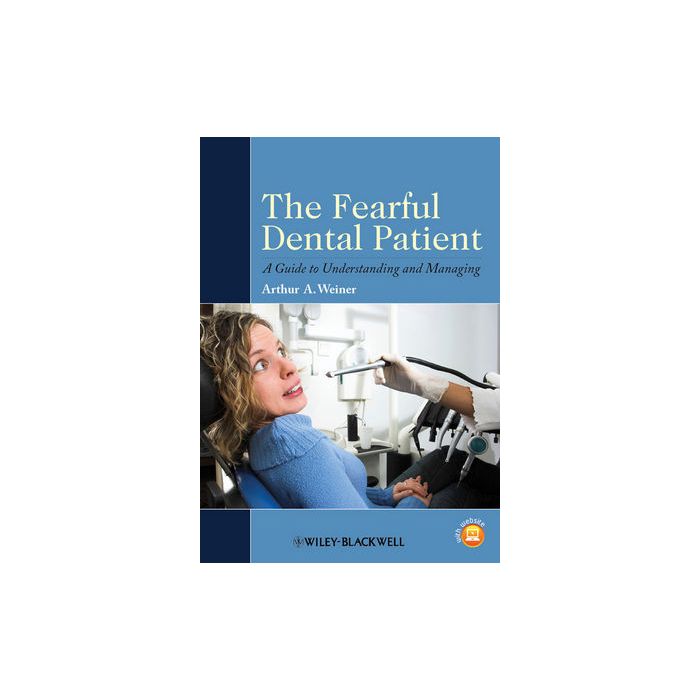The Fearful Dental Patient: A Guide to Understanding and Managing [Weiner - Wiley - Blackwell]

- ISBN/EAN
- 9780813820842
- Editore
- Wiley - Blackwell
- Formato
- Brossura
- Anno
- 2010
- Pagine
- 308
Disponibile
60,10 €
The Fearful Dental Patient: A Guide to Understanding and Managing helps dental professionals understand the basics of fear, anxiety and phobias and the role these emotions play in creating negative behavior within the dental environment. The text contains a variety of modalities that help identify dental fear and phobia, as well as chair-side techniques and practical advice aimed at improving patient cooperation and ensuring treatment compliance.
Chapter topics include the basic origins of patient fear and anxiety, how to indentify dental anxiety and varied approaches to managing fearful patients of any age. Approaches discussed employ behavioral, pharmacological, sedation and even hypnotic techniques, specifying combinations where required. Chapters also include coverage of a wide range of patients, including those with psychiatric comorbidities and special healthcare needs. The entire dental team will greatly benefit from the proven methods and practical guidance presented to better understand and treat fearful dental patients.
Maggiori Informazioni
| Autore | Weiner Arthur A. |
|---|---|
| Editore | Wiley - Blackwell |
| Anno | 2010 |
| Tipologia | Libro |
| Lingua | Inglese |
| Indice | 1 The basic principles of fear, anxiety, and phobia: past and present 3 Arthur A. Weiner Introduction 3 Major etiological models to explain anxiety 6 Behavioral indicators of anxiety 7 Nature of dental anxiety 9 Echelons of expression 9 Timing of dental anxiety 11 Severity 13 Differentiating psychological (exogenous) anxiety from medical (endogenous) anxiety 13 Natural history of endogenous anxiety 14 Phobias 20 Causes of phobias 21 Summary 24 Note 25 References 25 2 Determinants associated with creating fearful dental patients 29 Arthur A. Weiner Introduction 29 Prevalence of dental fear 30 Direct conditioning 31 The approach–avoidance conflict theory 32 Exploring the literature cataloging the common fi ndings of each of the determinants of dental fear 33 Patient control 38 Gender, age, socioeconomic, life status determinants of dental fear 39 Practitioners' determinants of dental fear 45 Oral health, quality of life, and the impact of dental anxiety 52 Summary 54 References 54 3 Factors affecting the psychological collection and identification of the fearful dental patient 61 Arthur A. Weiner Introduction 61 Prerequisite components for enhanced communication skills 62 Establishing a positive patient–dentist relationship 66 Two-way communication 68 Accommodating patient–dentist priority differences 69 The initial patient–dentist consultation 70 Practitioner's verbal inquiry and collection of past and present history 74 Summary 85 References 86 4 Chairside management of the fearful dental patient: behavioral modalities and methods 89 Arthur A. Weiner Introduction 90 The concept of the dental practitioner as a "facilitator of change" 90 Step-by-step chairside model for fear amelioration in the frightened dental patient 99 Chairside management resulting from patient's consultation and determinants of fears elicited 114 Doctor–patient relationship and its role in reducing anxiety and gaining treatment acceptance (this section by Samuel Shames) 116 Alternative behavior modification and treatment modalities 119 References 124 5 The pharmacological basis of pain and anxiety control 127 Morton Rosenberg and Michael Thompson Introduction 127 Local anesthesia 128 Summary 135 References 135 6 Hypnosis in dentistry 139 Michael A. Gow Introduction 139 What is hypnosis? 140 The hypnosis session 145 Hypnosis in dentistry—"hypnodontics" 154 "Informal" hypnotic techniques in day-to-day dental practice 161 An anchoring technique for child dental patients—"the high five anchor" 164 Conclusions 165 Suggested hypnosis societies, training pathways, and contacts for dentists 166 References 166 7 Management of complicated, high-risk patients with psychiatric comorbidities 173 Kelly M. Wawrzyniak and Ronald J. Kulich Introduction 173 Overview: behavioral science and the complicated patient 173 Posttraumatic stress disorder 174 Major depressive disorder and related mood disorders 178 Chronic pain disorder and related somatoform disorders 180 Schizophrenia 184 Personality disorders 186 Substance use disorders 189 Eating disorders 191 General management recommendations 191 References 193 8 Understanding and managing the fearful and anxious child 197 Laura Camacho-Castro Introduction 197 What is new in behavior management? 198 Birth to two years old 202 Two years old 203 Three to six years old—the preschool age 203 Six to twelve years old 204 The teenage years—adolescence 205 When does fear or anxiety first develop in children? 205 Basic behavior management techniques 206 Should the parent remain in the operatory? 209 Pharmacological management of behavior problems 210 Suggested Reading 212 References 213 9 The geriatric patient: psychophysiological factors associated with aging and dental anxiety 215 Arthur A. Weiner and Kathryn Ragalis Introduction 215 Understanding the changes associated with aging 216 Managing the risk factors associated with aging 228 Summary 233 References 234 10 Fear and anxiety management for the special needs patient 241 Linda M. Maytan and Gina M. Terenzi Introduction 241 Let us meet and evaluate your patients 243 Sensory perception modalities for treatment and communication 249 Alternative modalities for anxiety management 254 Case management presentation 259 References 262 Index 265 |
Questo libro è anche in:
